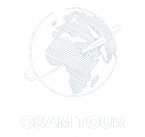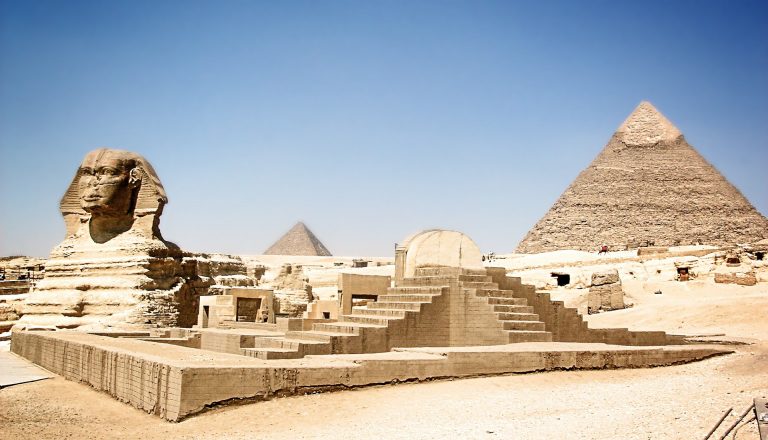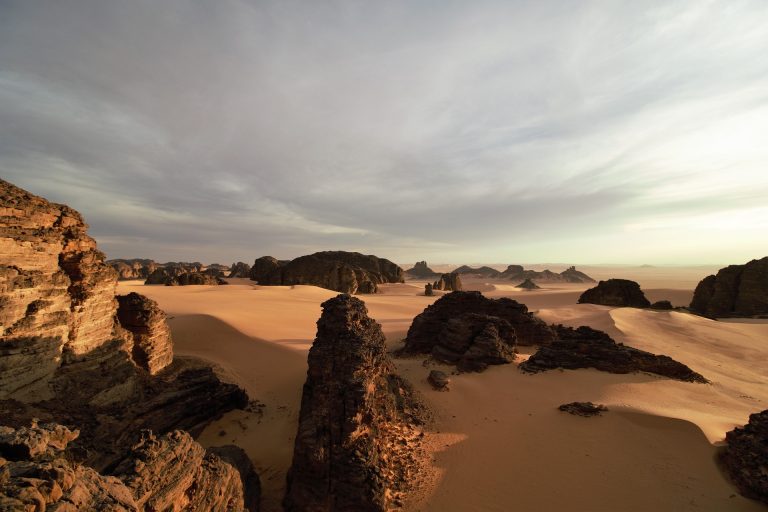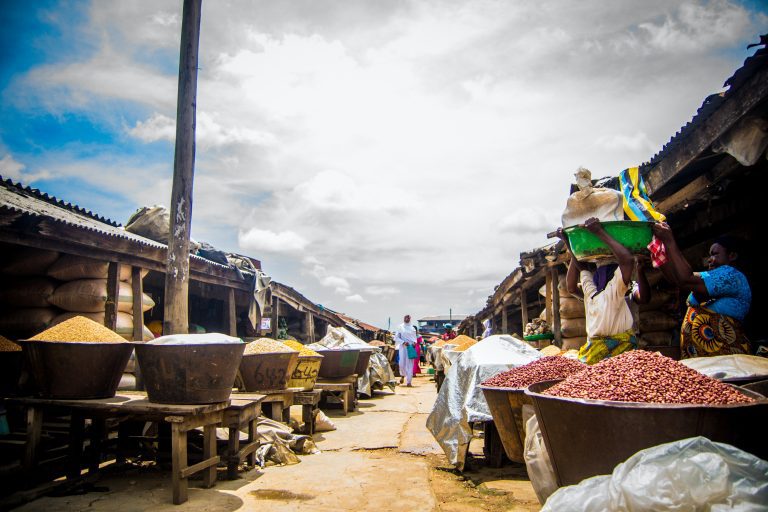MOROCCO Travel Guide for 2024: Fall in Love With Morocco

This essential Morocco travel guide unveils the hidden treasures of this captivating country. From bustling souks to mesmerizing landscapes, Morocco offers something extraordinary for every traveler.
With invaluable insights on when to visit, how to get around, and where to stay, this Morocco travel guide ensures a seamless adventure. Find money-saving tips, must-see attractions, and hidden gems that leave you breathless.
What to See and Do in Morocco
Morocco offers a treasure trove of attractions and experiences that cater to all types of travelers. Here are best places to visit and best things to do in Morocco:
- Marrakech: Lose yourself in the bustling souks of Marrakech, where vibrant colors, enticing aromas, and the sounds of traditional music fill the air. Explore the iconic Djemaa el-Fna square, visit the serene Majorelle Garden, and immerse yourself in the beauty of the Bahia Palace.

- Chefchaouen: Discover the enchanting “Blue City” of Chefchaouen, nestled in the Rif Mountains. Meander through its narrow, blue-washed streets, soak in the bohemian atmosphere, and capture Instagram-worthy photos at every turn.

- Sahara Desert: Embark on a desert adventure during your Morocco trip and witness the mesmerizing beauty of the Sahara. Take a camel trek across the golden dunes, spend a night under a blanket of stars in a traditional desert camp, and experience the magic of sunrise and sunset over the vast sand sea.

- Fes: Step back in time and explore the medieval medina of Fes, a UNESCO World Heritage site. Lose yourself in the labyrinthine streets, visit the historic Al Quaraouiyine Mosque and University, and admire the exquisite craftsmanship of the tanneries.

- Atlas Mountains: Escape to the breathtaking Atlas Mountains, where rugged peaks, lush valleys, and traditional Berber villages await. Hike to the summit of Mount Toubkal, the highest peak in North Africa, or explore the scenic Ourika Valley and its picturesque waterfalls.

- Essaouira: Experience the laid-back coastal charm of Essaouira. Stroll along the sandy beach, wander through the medina’s narrow lanes, and indulge in fresh seafood at the bustling port. For thrill-seekers, windsurfing and kitesurfing are popular activities here.

Fast Facts About Morocco
- Climate: Beautiful Morocco enjoys a diverse climate, with coastal regions experiencing mild winters and warm summers, while the interior can get hot in the summer and chilly in the winter. The Atlas Mountains have cooler temperatures year-round, with snow-capped peaks during winter months.
- Local Currency: The currency of Morocco is the Moroccan dirham (MAD). It’s best to exchange currency at authorized banks and exchange offices. Credit cards are widely accepted in major cities, but it’s advisable to carry some cash, especially when visiting smaller towns or markets.
- Power Voltage: The standard voltage in Morocco is 220V, with Type C and Type E power outlets being most common. It’s recommended to bring a universal adapter if your devices use a different plug type.
- Language: Arabic is the official language of Morocco, but you’ll find that many Moroccans also speak French, particularly in urban areas and tourist destinations. English is increasingly spoken, especially in tourist-centric areas.
- Religion: Islam is the predominant religion in Morocco, with the majority of the population being Muslim. Visitors should be respectful of local customs and traditions, particularly when visiting mosques or during religious festivals.
- Safety: Morocco is considered safe for women and tourists in general. However, it’s always wise to take basic precautions such as avoiding displaying wealth, being cautious in crowded places, and staying aware of your surroundings.
- Cultural Etiquette: Moroccan culture places great importance on hospitality. It’s customary to greet locals with a polite “Salam” (hello) and to accept offers of tea or food when visiting someone’s home. Dress modestly, especially when visiting religious sites.
- Tipping: Tipping is customary in Morocco. In restaurants, leaving a 10% tip is appreciated. For other services, such as guides, drivers, or hotel staff, a small tip of around 10-20 dirhams is appropriate, depending on the level of service.
When to Visit Morocco: Seasons and Festivals
Seasons: Morocco’s climate is diverse, offering different experiences throughout the year. Spring (March to May) and autumn (September to November) are generally considered the best time to go to Morocco, with pleasant temperatures and less crowded tourist sites. Summers (June to August) can be hot, especially in the interior, while winters (December to February) bring cooler temperatures.
Festivals: Morocco boasts a vibrant festival scene. The dates of festivals vary each year, as they are determined by the Islamic lunar calendar, but here are some notable ones to consider during your Morocco journey:
- Ramadan: This month-long religious observance, during which Muslims fast from sunrise to sunset, is an important time to experience Moroccan culture and traditions. Dates change each year.
- Eid al-Fitr: The celebration marking the end of Ramadan. It’s a festive time when families come together and exchange gifts. Dates change each year.
- Fes Festival of World Sacred Music: Held annually in Fes during late spring, this festival showcases a rich variety of music from around the world.
- Marrakech Popular Arts Festival: Taking place in July, this festival highlights traditional music, dance, and other art forms.
- Erfoud Date Festival: Held in October, this festival celebrates the harvest of dates and features cultural events, music, and local crafts.
- Mawazine Festival: Held in Rabat, usually in May, this internationally renowned music festival attracts famous artists from various genres.
How to Get Around Morocco
Navigating Morocco is relatively easy, thanks to its well-connected transportation system. Here are the best ways to get around and explore the country during your Morocco trip:
- Trains: Morocco has an extensive train network that connects major cities like Casablanca, Marrakech, Fes, and Tangier. Trains are comfortable, affordable, and offer a convenient way to travel between destinations. Book your tickets in advance, especially during peak travel seasons.
- Buses: The bus network in Morocco is comprehensive and covers both major cities and smaller towns. Companies like CTM and Supratours provide reliable and comfortable bus services. Buses are an economical option, but keep in mind that travel times can be longer than by train.
- Taxis: Taxis are a popular mode of transportation within cities and for shorter distances. In cities, you’ll find shared “grand taxis” that follow specific routes and private “petit taxis” that can be hailed on the street. Negotiate the fare before starting your journey, or ensure the meter is used.
- Rental Cars: Renting a car gives you the freedom to explore Morocco at your own pace, especially if you plan to venture off the beaten path. International car rental agencies operate in major cities, and road conditions are generally good. However, driving in cities can be chaotic, so be prepared for that.
- Domestic Flights: If you’re traveling long distances or want to reach more remote regions quickly, domestic flights are available. Royal Air Maroc and other local airlines operate domestic routes, connecting major cities and tourist destinations. Compare prices and book in advance for the best deals.
Where to Stay in Morocco: Accommodation Tips
When it comes to finding the perfect accommodation, you have a range of options that suit different budgets and preferences. Here are some valuable tips to help you make the most of your stay:
- Riads and Guesthouses: For an authentic and charming experience, consider staying in a traditional riad or guesthouse. These beautifully restored Moroccan homes often feature inner courtyards and offer a cozy ambiance. Riads can be found in the medinas of cities like Marrakech and Fes, providing a convenient location to explore the bustling streets.
- Hotels and Resorts: Morocco is home to numerous hotels and resorts that cater to different budgets and offer various amenities. From luxury accommodations with breathtaking views to budget-friendly options with comfortable rooms, you’ll find plenty of choices. Check online booking platforms for deals and read reviews to ensure the accommodation meets your expectations.
- Camping and Glamping: If you’re an adventure enthusiast or want to experience the beauty of Morocco’s nature, consider camping or glamping. There are designated campsites in national parks, including the Sahara Desert, where you can spend a night under the stars. Glamping options provide a more luxurious camping experience with comfortable beds and facilities.
- Home Rentals: Another popular option is renting a private home or apartment through platforms like Airbnb. This gives you the opportunity to have a more local experience and often provides additional space and amenities like a kitchen. Just ensure you book through reputable hosts and read reviews from previous guests.
Morocco Travel Guide: Money-Saving Tips
Traveling in Morocco doesn’t have to break the bank. With some smart planning and money-saving tips, you can make your trip more affordable without compromising on the experiences. Here are some valuable tips to help you save money during your Morocco travel adventure:
- Travel during the Shoulder Season: Consider visiting beautiful Morocco during the shoulder season, which is the period just before or after the peak tourist season. This way, you can enjoy favorable weather, fewer crowds, and often find better deals on accommodations and flights.
- Bargain at Markets and Souks: Haggling is a common practice in Moroccan markets and souks. Don’t be afraid to negotiate prices, especially for souvenirs, clothing, and handicrafts. Start with a lower offer and be prepared to walk away if the price doesn’t meet your budget. Remember, it’s all part of the fun and cultural experience during your Morocco journey!
- Eat at Local Eateries: Explore the local food scene by dining at smaller, family-owned restaurants and street stalls. These establishments often offer authentic Moroccan cuisine at more affordable prices compared to upscale restaurants. Indulge in delicious tagines, couscous, and street food delights like Moroccan pancakes (msemen) and grilled meats (brochettes).
- Use Public Transportation: Public transportation, such as trains and buses, is not only convenient but also budget-friendly. They offer a cost-effective way to travel between cities and towns. Consider purchasing multi-journey tickets or passes to save even more.
- Stay Hydrated with Tap Water: While it’s generally advised to drink bottled water in Morocco, tap water is safe for brushing your teeth and washing fruits and vegetables. To save on the cost of bottled water, bring a reusable water bottle and refill it from filtered water stations or ask restaurants and accommodations if they have filtered water available.
- Explore Free Attractions and Activities: Morocco is rich in natural and cultural wonders, many of which can be enjoyed without spending a dime. Take advantage of free attractions like exploring the vibrant medinas, wandering through beautiful gardens, and admiring the stunning architecture of mosques and palaces.
What Food to Try in Morocco: Traditional Cuisine
Moroccan cuisine is a tantalizing fusion of flavors, spices, and aromatic ingredients that will delight your taste buds. Here’s a Morocco travel guide to the culinary delights and traditional dishes you must try during your visit:
- Tagine: A signature Moroccan dish, tagine refers to both the cooking vessel and the slow-cooked stew it contains. Prepared with a variety of ingredients like meat (such as lamb or chicken), vegetables, dried fruits, and an array of spices, tagines are bursting with flavors. Don’t miss trying the classic lamb or chicken tagine with prunes and almonds.

- Couscous: Morocco’s beloved couscous is a staple dish made from steamed semolina grains. Served with tender meat (such as beef or chicken) and a medley of vegetables, it’s a comforting and satisfying meal. Don’t be surprised if you’re offered a bowl of warm, fragrant broth to pour over your couscous for added flavor. A must-try meal during your Morocco adventure.

- Moroccan Mint Tea: A symbol of Moroccan hospitality, the traditional mint tea is a must-try beverage. Made with green tea, fresh mint leaves, and an infusion of sugar, it’s both refreshing and aromatic. Enjoy a cup of mint tea in a traditional tea salon or while relaxing at a café, and savor the rich flavors and cultural significance.

- Pastilla: Indulge in the delectable Moroccan pastry known as pastilla or bastilla. This sweet and savory treat features layers of thin, flaky pastry filled with a mixture of pigeon or chicken, almonds, spices, and a hint of sweetness from powdered sugar and cinnamon. It’s a unique culinary delight that showcases the blending of flavors in Moroccan cuisine.

- Harira: Harira is a traditional Moroccan soup often enjoyed during Ramadan and other special occasions. This hearty soup combines lentils, chickpeas, tomatoes, and a medley of aromatic herbs and spices. It’s not only delicious but also a comforting and nourishing dish that reflects the warmth of Moroccan hospitality.

- Moroccan Sweets: End your culinary journey with a selection of Moroccan sweets, known as “pastries of the sultan.” Delight in treats like almond-filled gazelle horns, sesame-coated chebakia, and honey-soaked almond pastries known as briouats. These sweet delicacies are perfect with a cup of Moroccan mint tea.

For an adventure Food Tour in Morocco, check out our post: Discover the Exquisite Flavors: A FOOD TOUR in MOROCCO
Discover the Exquisite Flavors: A FOOD TOUR in MOROCCO
What to Bring from Morocco: Souvenir Ideas
As you explore the vibrant markets and souks of Morocco, you’ll discover a wealth of unique and beautiful souvenirs to bring back home. Here are some souvenir ideas to help you capture the essence of Morocco and cherish your Morocco travel memories:
- Handmade Moroccan Carpets: Adorn your home with the exquisite craftsmanship of Moroccan carpets and rugs. These intricately woven textiles feature vibrant colors, intricate patterns, and various sizes. From traditional Berber rugs to luxurious silk carpets, you’ll find a wide range to choose from. Remember to haggle for the best price and ensure you’re buying from a reputable vendor.
- Moroccan Pottery and Ceramics: Bring home a piece of Moroccan artistry with hand-painted pottery and ceramics. From colorful tagine pots and decorative plates to intricately designed bowls and vases, these unique pieces will add a touch of Moroccan charm to your living space.
- Traditional Moroccan Lanterns: Illuminate your home with the enchanting glow of Moroccan lanterns. Crafted from metal and colored glass, these lanterns come in various shapes and sizes. Choose from intricate patterns and vibrant hues to create an atmospheric ambiance reminiscent of Moroccan nights.
- Argan Oil Products: Morocco is renowned for its high-quality argan oil. Bring back a bottle of this liquid gold or explore a range of argan oil-based products such as skincare items, haircare products, and soaps. Argan oil is known for its nourishing and rejuvenating properties, making it a wonderful souvenir for self-care.
- Leather Goods: Morocco is famous for its leather craftsmanship, particularly in cities like Fes and Marrakech. Purchase leather goods like bags, wallets, shoes, and belts made from high-quality leather. Look for genuine leather products and choose from a variety of styles and designs.
- Traditional Moroccan Clothing and Accessories: Immerse yourself in Moroccan culture by purchasing traditional clothing and accessories. Consider buying a kaftan, a loose-fitting dress often worn on special occasions, or a colorful and intricately embroidered Moroccan scarf known as a shawl or hijab. These pieces make fashionable and meaningful souvenirs.
Additionally, check out our articles about 2023 top travel destinations in the world, and the best holiday destinations in 2024.






